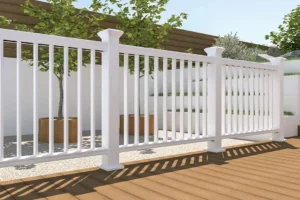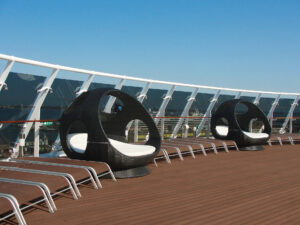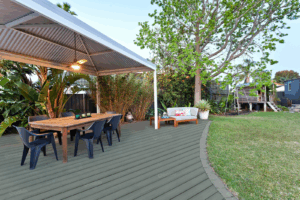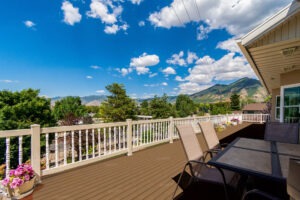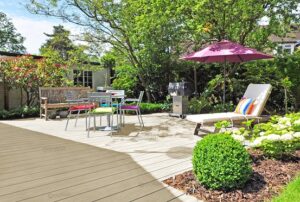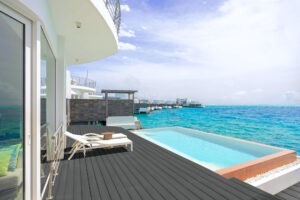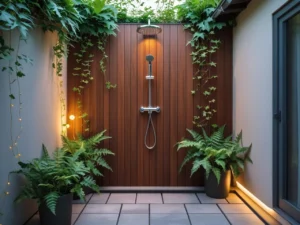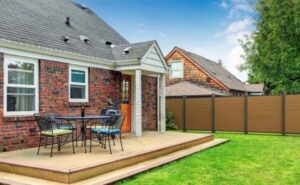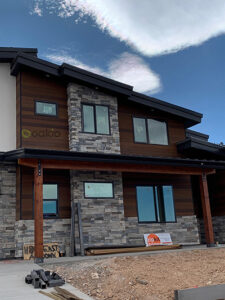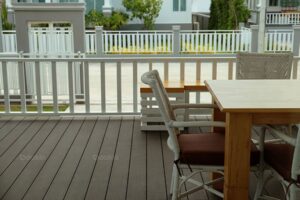Why WPC Prefab Houses Are the Future of Leisure Architecture
As lifestyles evolve and people yearn for closer contact with nature, the cold rigidity of concrete architecture often feels at odds with the desire for warmth, comfort, and sustainability. In response to this shift, WPC (Wood-Plastic Composite) quick-assembly houses are emerging as a popular alternative—offering not only speed and efficiency but also style and eco-friendliness.
These prefabricated homes, especially designed for outdoor environments like resorts, homestays, and campsites, have become a darling of the architectural world. They embody a smart combination of functionality, cost-effectiveness, and design flexibility, addressing many of the challenges associated with traditional construction.
What Are Outdoor WPC Prefab Houses?
WPC prefab houses are structures made from wood-plastic composite, a hybrid material composed of wood fibers and recycled plastics. These homes are manufactured off-site and assembled quickly on location, reducing construction waste and time. Unlike traditional concrete or brick houses, WPC prefab houses are lighter, modular, and more adaptable to different climates and terrains.
Their quick-installation nature makes them ideal for vacation retreats, eco-resorts, rural tourism, and emergency housing—anywhere that comfort, speed, and environmental harmony are key priorities.

Functional Design: Maximizing Space and Practicality
One of the core advantages of WPC prefab homes lies in their thoughtful layout and space optimization. Designers often focus on maximizing indoor usability, ensuring that every square meter serves a purpose.
A popular layout in vacation accommodations is the “two-bedroom, one-living room, two-bathroom” model, which caters to families or small groups. This balance offers privacy and convenience without unnecessary complexity. The use of modular units allows for flexible configuration, making it easy to scale or adapt depending on the site or customer preference.
Affordability Without Compromising Comfort
In today’s real estate market, affordability often comes at the cost of quality or aesthetics. WPC prefab homes challenge this notion by offering cost-effective construction while maintaining a high standard of comfort and durability.
These homes often feature minimalist, modern designs that focus on clean lines, natural textures, and practical furnishings. Rather than spending on excessive decoration, the design philosophy centers around simplicity and relaxation—exactly what vacationers seek.
The materials themselves also contribute to cost savings, as WPC panels are competitively priced, easy to install, and require minimal long-term maintenance.
Innovation in Form: Beyond Traditional Aesthetics
Traditional vacation homes often fall into repetitive architectural molds, offering little variation in design. WPC prefab homes, however, embrace design innovation thanks to the versatility of the material.
WPC can be molded into various forms, allowing for custom facades, curved lines, and creative roofing styles. This flexibility enables architects to design homes that blend seamlessly with their natural surroundings or stand out as iconic landmarks.
In areas saturated with similar lodges or cabins, a distinctively designed WPC house can become a tourist attraction in its own right.
Creating a Harmonious Atmosphere with Surrounding Elements
The appeal of a vacation property often goes beyond the building itself. WPC prefab homes excel in integrating with outdoor landscaping features such as:
- WPC pergolas
- Composite boardwalks and platforms
- Decorative pavilions and benches
- Covered porches and viewing decks
These elements can enhance the immersive experience of nature, allowing visitors to enjoy both the interior comfort and the surrounding environment. The textured finish of WPC materials provides a natural wood-like feel, helping the structure blend into the landscape while retaining a modern, polished look.
Material Advantages: Why WPC Outperforms Traditional Wood
WPC isn’t just about looks—it’s a high-performance material that solves many of the problems associated with natural wood:
- Durability: Resistant to rotting, cracking, and pests
- Weatherproof: Holds up under UV exposure, humidity, and temperature fluctuations
- Low Maintenance: No need for painting, sealing, or frequent repairs
- Fire Resistance: Safer for outdoor applications
These benefits make WPC ideal for outdoor and semi-exposed settings where traditional wood would degrade over time.
Climate Compatibility: North or South, WPC Works
Real wood reacts drastically to environmental changes—cracking in dry northern winters and rotting in humid southern summers. WPC, however, is engineered to resist such challenges.
Whether installed in the wet climates of the south or the dry northern plateau, WPC homes remain structurally stable and comfortable. This geographic versatility makes WPC a truly global material, suitable for projects across varied regions without the need for climate-specific adjustments.
WPC Houses as the Future of Eco-Friendly Tourism
Outdoor WPC prefab houses represent more than a trend—they are a practical solution to modern housing and tourism demands. Blending quick construction, eco-conscious materials, thoughtful design, and long-term performance, these homes are perfectly positioned to transform how we build and experience vacation properties.
As consumer preferences shift toward sustainable, nature-integrated, and affordable living, WPC prefab houses are set to become a key component of the leisure and hospitality architecture of the future.
Trending Reading
What Are the Differences Between the WPC Board and PVC Board?
[2025 Update] How Long Does WPC Decking Last?
